Rear Wheel Size – 20″ or 26″ – Does it matter?
Well, no – both wheels rotate and roll along the ground.
In the fuller answer though, Yes, it does matter and should be a consideration in what you would like to take home. The first issue I see is that ground clearance for your chain from sand and mud decreases as the wheel size decreases. If you went to the other extreme from a large diameter wheel and perhaps to a 16″ wheel, you would find it difficult not to be cutting the grass or pulling up weeds, if you are off a defined sealed path.
Different design trikes will also allow the chain to approach the rear derailleur at different angles:
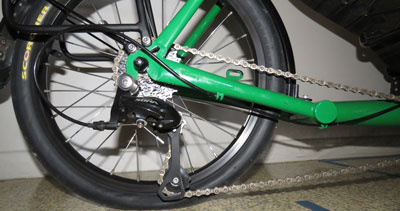
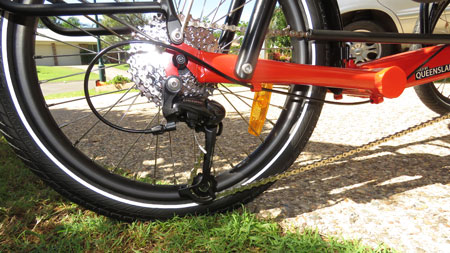
Smaller wheels limit the gearing capabilities, not just in the smaller gear to wheel diameter, but also in the travel/swing of the derailleur from minimum to maximum. Having a large diameter front and rear chainring or sprocket to make up for a smaller diameter wheels is fine to the point where if you are not careful of your gear selection, you may not have enough chain to change to all gears. The rear wheel size of the trike can has an effect on the look of the trike and on the way the trike handles and the speed in different situations.
The smaller 20” (or 406mm) wheels are great for people who need low gears. People who are touring with heavy loads, live in very hilly areas and rely more on leg than motor power can benefit from the low gears which can easily be achieved with a 20” drive wheel.
Larger 26” (or 559mm) drive wheels give good high gears easily and have a good range of tyres available from off road to racing specs. Larger wheels can hold speed a little better on rough surfaces so lighter weight riders covering flatter areas can benefit from 26” rear wheel options. There are other good options that will make allowances for larger wheel diameters to achieve effective low gearing such as the Schlumph Mountain Drive.
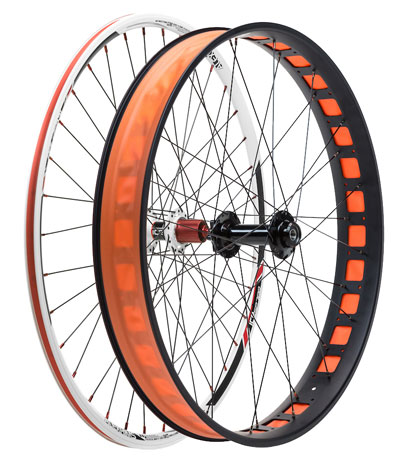
A 700c rear wheel is the standard racing bike wheel size which means the widest range of fast tyres are available. It’s large size also allows easy access to high gears for fast riding. The 700 is roughly a 28” wheel in the inch based measuring system.
Fats… Off road and travelling on the extra wide 26” wheels with 4” tyres allow you to run very low pressures for traction on soft and loose surfaces such as snow, mud and sand. The larger the wheel, the more tyre is spread along the surface. Smaller, narrower and harder wheels will dig into softer surfaces.
Folding Space
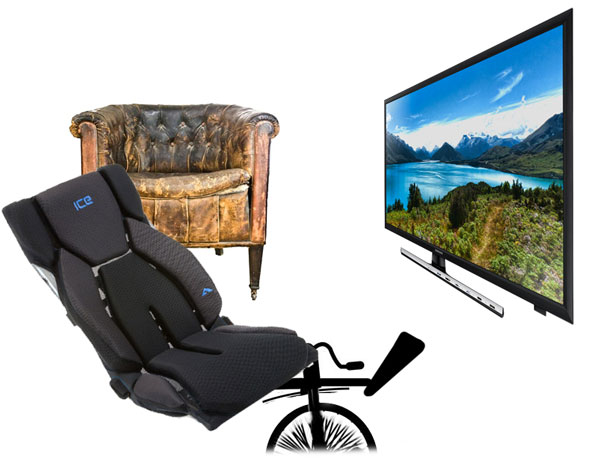 These days, it is handy to be able to fold the trike for one reason or another. Not much garage or bed room space, smaller tighter boot space in the shopping car, can’t get a fixed recumbent into where the TV lives cause it’s seat is more comfortable than the old lounge.
These days, it is handy to be able to fold the trike for one reason or another. Not much garage or bed room space, smaller tighter boot space in the shopping car, can’t get a fixed recumbent into where the TV lives cause it’s seat is more comfortable than the old lounge.

Some trikes simply don’t fold. Many trikes fold but not so many fold flat without having to remove the rear wheel. If this consideration is important, CTF fold trikes can make the task very easy. This is applicable to both 26″ and 20″ rear wheel trikes. Check out these things and options like “Quick Release [QR] Front Axles” when you look for your recumbent trike. Taking off and putting back on the front wheels quickly and without tools can help substantially. It effects not only the space required but how much you need to lift and manage at one time.
 While QR rear axels are very common, they make it little easier to fold the trike if you need to remove the rear wheel to get the trike into a specific space and need to negotiate a chain hanging across sprockets and separating the wheel from the drive system (sprockets, gears, derailleurs etc).
While QR rear axels are very common, they make it little easier to fold the trike if you need to remove the rear wheel to get the trike into a specific space and need to negotiate a chain hanging across sprockets and separating the wheel from the drive system (sprockets, gears, derailleurs etc).
If folding is a requirement, you should also consider things like: how easy is it to remove and replace the seat before folding – OR – does the seat simply fold with the trike? Will it stand up on the floor in a handy manner in the garage. Here is one that folds, with the seat still attached, clips together without tools and ends up as a stand and set of wheels to trolley it around to the back of the car where it will lay flat on the floor in one easy lift (first though, give it a blanket).
Front Wheels
The general front wheel size for recumbent trikes is 20″ (or 406mm). In general terms, as there are a lot of determining factors, the smaller wheel size allows for a stronger wheel. On a bicycle as you go into a corner the bike is leant into the corner keeping the weight of the rider above the wheel geometry. The weight bearing strength alters little but in the case of a recumbent trike, the wheels remain in their upright position where in cornering the trike and riders weight is pushed against the side of the wheel.
The front wheels are generally subject to much higher forces than the rear wheel. A larger wheel with the same width will provide less strength. Most recumbents have very particular design qualifications that are based on particular wheel size and it is not recommended to try putting a larger wheel than as manufactured. Most manufacturers put a lot of effort into wheel design including the diameter and angle of spokes, have been there doing that for many years with practical experiences. Big wheels do work work and do so equally equally well and have positive aspects.
We know through experiment and experience, there are advantages for large wheels, and there is a proper place for them.
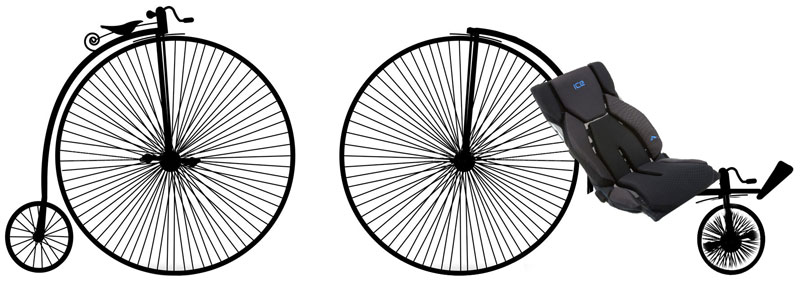
You will not likely be riding in an experimental wind tunnel! The important thing is, the seat needs to be accessible and make enjoying life a lay-back, practical, fun experience.